Oman plans year-round mountain destination
27 March 2024
Much is changing in Oman as the sultanate launches a series of cities and destinations as part of Oman Vision 2040.
These projects form part of the Oman National Spatial Strategy (ONSS), which was approved by Sultan Haitham Bin Tariq in March 2021 to direct urban growth in the sultanate for the next 20 years.
 The ONSS, which is part of the Housing & Urban Planning Ministry, is responsible for making sure Oman’s projects are set in the best locations, as well as with overseeing the development of a new generation of futuristic cities across the sultanate.
The ONSS, which is part of the Housing & Urban Planning Ministry, is responsible for making sure Oman’s projects are set in the best locations, as well as with overseeing the development of a new generation of futuristic cities across the sultanate.
“We started with a pilot project,” says Ibrahim Waili, executive director of the ONSS.
“At first we called it Seeb City. It is now called Sultan Haitham City and was publicly launched last year. We have sold phase one to real estate developers, and they are launching sales. It is a big deal. People are already buying, and we are already building the infrastructure.”
Sultan Haitham City covers an area of 14.8 square kilometres and is designed to accommodate 100,000 people, with housing options including detached and semi-detached villas, townhouses and flats. A total of 20,000 housing units are planned.
Other projects in the pipeline include cities in Nizwa, Salalah and Sohar. “These cities will together deliver something in the range of 60,000 real estate units. There are 20,000 in Sultan Haitham City. The rest vary between 10,000 and 15,000 units,” says Waili.
 Mountain escape
Mountain escape
The most recent project to be officially announced was the Omani Mountain Destination (OMD) in February. It is
a new development planned for Jebel Al Akhdar, which is a mountain in the Omani interior, located 150 kilometres from Muscat.
The project began as an idea when Sultan Haitham visited his assets in the area shortly after becoming sultan in 2020. After the visit, he decided to use his land to create a global destination.
“It is a prime location because it is at the peak of Jebel Al Akhdar,” says Waili.
The altitude is crucial because it offers a cooler retreat for people looking to escape the extreme heat of summer in the Gulf.
“The temperature difference between the peak and Muscat, and other areas at sea level, is about 10 degrees. It is also about another 2 degrees cooler than the rest of the mountain because it is at an elevation of 2,400-2,500 metres.”
Canadian engineering firm AtkinsRealis prepared the masterplan for the $2.4bn destination, which includes 2,537 housing units, 2,000 hotel rooms and a health and wellness village known as the Vessel.
The development will also include a biodiversity centre, a high-altitude sports training centre, amphitheatres, a museum and parks.
“The government will act as the master developer, and will sell land to third-party real estate developers,” says Waili. “We already have investors that want to build,” he adds.
Traditionally, property ownership on the mountain was restricted to people from Jebel Al Akhdar. The OMD will differ, and property will be sold to other Omanis and foreign nationals.
“The masterplan has been designed to hold a festival for up to 30,000 people,” says Waili.
“Because of the weather that we have there – it’s zero degrees in winter and 25 degrees in summer – we can have different types of activities and festivals all year round, and that will make it a unique location in the Arabian Peninsula.
“We are going to have our own Davos,” he adds.
It’s zero degrees in winter and 25 degrees in summer … that will make it a unique location in the Arabian Peninsula
Ibrahim Waili, ONSS
Boosting accessibility
Improved access will also help boost the destination’s appeal.
Although at present Jebel Al Akhdar is only accessible from a road to the south of the mountain, located in the Nizwa area, with the new development there is a plan to also open up access onto the mountain from the north.
This will significantly cut journey times from the most densely populated areas of Oman, which extend from Muscat northwards along the Batinah coast.
Journey times from the UAE and major cities such as Dubai will also be reduced significantly.
The new road will follow a shallower gradient and will be able to be used by two-wheel-drive cars. The existing road from the south is so steep that only four-wheel-drive vehicles are allowed to use it.
To increase the accessibility of the resort even further, the masterplan for the OMD development also includes a cable car that will take visitors to the top of the mountain.
Exclusive from Meed
-
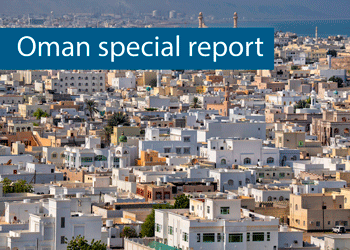 Oman steadies growth with strategic restraint
Oman steadies growth with strategic restraint31 December 2025
-
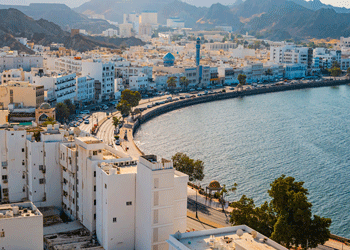 Oman pursues diversification amid regional concerns
Oman pursues diversification amid regional concerns31 December 2025
-
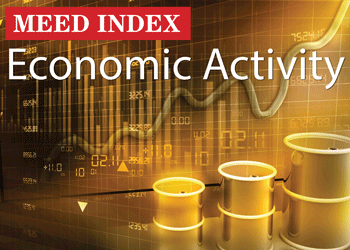 UAE and Qatar emerge as markets to watch
UAE and Qatar emerge as markets to watch30 December 2025
-
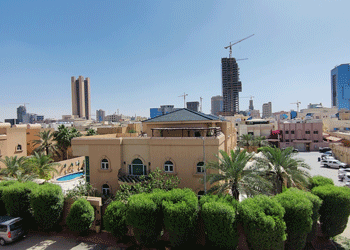 Investors focus on residential sector for new deals
Investors focus on residential sector for new deals29 December 2025
-
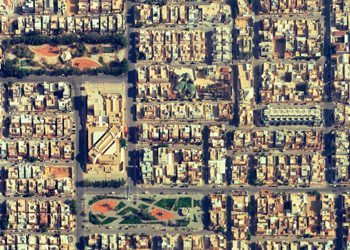 Saudi real estate to surge in 2026
Saudi real estate to surge in 202629 December 2025
All of this is only 1% of what MEED.com has to offer
Subscribe now and unlock all the 153,671 articles on MEED.com
- All the latest news, data, and market intelligence across MENA at your fingerprints
- First-hand updates and inside information on projects, clients and competitors that matter to you
- 20 years' archive of information, data, and news for you to access at your convenience
- Strategize to succeed and minimise risks with timely analysis of current and future market trends

Related Articles
-
 Oman steadies growth with strategic restraint
Oman steadies growth with strategic restraint31 December 2025
 Commentary
Commentary
John Bambridge
Analysis editorOman’s economic story in recent years has been one of steady rebalancing rather than dramatic transformation. Amid sharpening regional headwinds and geopolitical uncertainty, Muscat has pursued a measured diversification strategy that is steadily paying off. In 2025, the sultanate reached a critical inflection point in this journey: non‑hydrocarbon activity rose to account for more than 70% of GDP.
This reflects a government-led diversification agenda that has only accelerated since the pandemic, with redoubled support for logistics, tourism, mining and green energy. The sultanate is nevertheless walking a careful line between ambition and restraint. The government has clear spending limits, and fiscal prudence remains the implicit byword for any public investment. However, Oman’s key growth sectors are also those that offer long-term resilience and align with the country’s natural advantages.
In the energy sector, Oman LNG is pushing ahead with its plan to add a fourth liquefaction train, in a move that will significantly increase LNG export capacity. The project has become a focal point for the energy sector’s renewed momentum. With global gas markets reshaped by supply insecurity and shifting demand patterns in Asia, Oman has a narrow but meaningful window in which to expand.
Renewable energy is advancing in parallel, with Oman preparing for a substantial pipeline of 4.5GW of solar independent power plants and roughly 1GW of new wind capacity by 2030. If delivered on schedule, this will reposition the sultanate as a regional leader in utility-scale renewables and lay the groundwork for its green hydrogen aspirations. The challenge will be to sequence projects in a way that maintains investor confidence while managing grid integration and regulatory clarity.
Construction, too, has gathered momentum. Contract awards have risen in the past three years, driven by infrastructure, industrial schemes and urban development. It is a sector that often serves as a bellwether for broader economic health – and in Oman’s case, the trajectory is largely positive. Oman is not racing to launch headline-grabbing megaprojects, though some of its recent master plans – such as Sultan Haitham City – have attracted attention for their reimagining of urban sustainability at a level of sophistication well above the Gulf industry standard.
Such developments are an apt metaphor for Oman’s broader diversification trajectory: the sultanate is building patiently and coherently, with an eye on resilience as much as on growth, and doing so within a defined budget. Amid uncertainty, it is a strategy that suits the times.

MEED’s January 2026 report on Oman includes:
> GVT & ECONOMY: Oman pursues diversification amid regional concerns
> BANKING: Oman banks feel impact of stronger economy
> OIL & GAS: LNG goals galvanise Oman’s oil and gas sector
> POWER & WATER: Oman prepares for a wave of IPP awards
> CONSTRUCTION: Momentum builds in construction sectorTo see previous issues of MEED Business Review, please click herehttps://image.digitalinsightresearch.in/uploads/NewsArticle/15242389/main.gif -
 Oman pursues diversification amid regional concerns
Oman pursues diversification amid regional concerns31 December 2025

In late November, a batch of 36 wind turbines arrived at Oman’s Duqm Port, destined for the Riyah 1 and 2 projects being developed by OQ Alternative Energy. Each turbine can generate some 6.5MW – enough to supply 2,400 Omani homes – and yet, rather than being fed into the national grid, their output will be used by Petroleum Development Oman (PDO) to ramp up the use of renewable energy in its own operations. This will both reduce its carbon emissions and free up more gas for other purposes.
This combination of continued hydrocarbon exploitation and clean energy development is a familiar pattern around the Gulf. For Oman, it is also a sign of its efforts to diversify while making existing energy resources go further.
With the recovery of oil prices, Oman’s nominal GDP has surged by 41% from 2020 to 2024, according to the Washington-based IMF
Plans within plans
In 2026, the country will begin the 11th phase of its five-year cycle of its Vision 2040 development plan, in which both diversification and improved performance feature strongly. Ministry of Economy undersecretary Nasser Rashid Al-Maawali set out the objectives of the 2026-30 plan in a 24 November presentation to the State Council. Among the points he highlighted were a focus on building a diversified and sustainable economy, greater economic decentralisation and raising institutional performance.
The authorities can look back with some satisfaction on the10th plan, which began as Sultan Haitham Bin Tariq Al-Said was taking office in January 2020. Since then, the government’s finances have been turned around, with debt levels brought down and spending kept under control even as the economy as a whole has continued to grow. With the recovery of oil prices, Oman’s nominal GDP has surged by 41% from 2020 to 2024, according to the IMF, reaching $107bn at the end of that period.
Diversification remains a work in progress, but there has been positive movement. According to Capital Intelligence Ratings, non-hydrocarbon activity accounted for 72.4% of GDP in the first quarter of 2025, compared to 69.9% in 2020.
In a review of the economy issued in late November, the IMF had encouraging words for Muscat. The organisation’s mission chief for Oman, Abdullah Al-Hassan, said the economic outlook for the country was “favourable” and the coming five-year plan “presents an important opportunity to accelerate economic diversification, boost productivity and create more private sector jobs for Omanis”.
However, there are still vulnerabilities. Data from the Ministry of Finance for the third quarter of the year showed revenues falling and expenditure rising, amid subdued international oil prices and restrictions on output under the Opec+ arrangements.
Public revenue over the first nine months of this year totalled RO8.5bn ($22bn), an 8% decrease from the same period of 2024, with oil income down 13% and gas revenues down 4%.
Public spending meanwhile was up 2% over the period to RO8.9bn, leaving a small but noteworthy deficit. The shortfall was mainly due to capital expenditure, with ministries spending RO1.1bn on development projects, or 23% more than the RO900m that had been anticipated. Economists expect further budget deficits in the coming years, unless oil prices rebound.

Non-oil potential
Developing the non-oil economy remains a critical aspect of future growth, with key target sectors including tourism. Oman Air is considering ordering more planes in the new year, with chief executive Con Korfiatis saying at the recent Dubai Airshow “we will definitely need more” narrow-bodied jets. It is unclear if it will order new planes from Airbus or Boeing or look for second-hand jets on the lease market.
Green hydrogen is another significant area of activity for the future, although it remains to be seen if global demand will develop quickly enough to meet all the supply being planned, in Oman and elsewhere. According to the authorities, Oman is aiming to attract $140bn of investments in its green hydrogen sector by 2050.
In the shorter-term, a more prosaic list of sectors is generating growth. According to the IMF, the strong economic performance in the first half of 2025 was boosted by activity in the manufacturing, wholesale and retail, logistics, construction, and agriculture and fishing sectors. “Growth is projected to strengthen over 2025-26 as oil production cuts unwind and non-hydrocarbon activity continues to expand,” said Al-Hassan.
He urged further modernisation of the tax system, including the personal income tax on high earners, which is due to be introduced in early 2028. The IMF has also called for more cuts to spending, including phasing out untargeted energy subsidies.
Geopolitical risk
However, for all the progress made in expanding the economy and putting government finances on a surer footing in recent years, Oman cannot escape its neighbourhood. The IMF noted in its report that “renewed geopolitical tensions could weigh on growth and fiscal and external positions.”
This is something Omani officials are acutely aware of and it has informed the country’s long-standing role as a regional mediator.
Events in June threw that into sharp relief, when a planned sixth round of indirect talks between the US and Iran in Muscat were abruptly cancelled, after Israel launched a bombing campaign on Iran.
It was an event Oman’s Foreign Minister Sayyid Badr Bin Hamad Al-Busaidi focused on during his speech at the Manama Dialogue conference in Bahrain in early November. “We have long known that Israel, not Iran, is the prime source of insecurity in the region,” he said.
With Saudi Arabia now reportedly playing a more central role in mediating between the US and Iran, Oman’s position as a regional intermediary may now be reduced – at least in regard to that bilateral stand-off. But Muscat could still play an important role in helping to resolve the situation in Yemen, particularly as the Houthi’s main negotiator Mohammed Abdulsalam resides in Muscat.
“Failing to engage constructively and in good faith with Iran, with the Houthis and others, will not resolve issues like proxy wars, human suffering or nuclear proliferation,” Al-Busaidi told the audience in Manama. “On the contrary, exclusion fuels conflict, extremism and instability, worsening exactly these challenges. Only an inclusive regional security framework can effectively address shared challenges.”
A calmer geopolitical backdrop would also provide a more conducive environment for Omani economic development and diversification.
MEED’s January 2026 report on Oman also includes:
> BANKING: Oman banks feel impact of stronger economy
> OIL & GAS: LNG goals galvanise Oman’s oil and gas sector
> POWER & WATER: Oman prepares for a wave of IPP awards
> CONSTRUCTION: Momentum builds in construction sector
https://image.digitalinsightresearch.in/uploads/NewsArticle/15174143/main.gif -
 UAE and Qatar emerge as markets to watch
UAE and Qatar emerge as markets to watch30 December 2025

Heading into 2026, the UAE and Qatar lead the MEED Economic Activity Index, with both countries surging ahead of their peers buoyed by their bullish real GDP growth forecasts, sound macroeconomic fundamentals and expansionary project markets.
The UAE remains the region’s strongest economic performer, with real GDP expected to grow by 4.8% in 2025 and 5% in 2026, according to the IMF. Project award activity has held at more than $90bn in the past 12 months – matching the previous period and standing 75% above the average annual awards value of the past decade.
Awards also exceeded project completions by a ratio of 2.5:1, generating a $60bn positive net change and lifting the value of projects under execution by 25%.
Qatar has the region’s most bullish real GDP outlook, with its 2.9% growth in 2025 expected to accelerate to 6.1% in 2026, driven by a liquefied natural gas expansion and rising non-oil output. The projects market is also strengthening again after the post-2022 World Cup lull. Awards increased by 24% in the past 12 months, rising to 30% above the 10-year average and expanding the value of projects under execution by 8%.
The UAE remains the region’s strongest economic performer, with real GDP expected to grow by 4.8% in 2025 and 5% in 2026
Kuwait follows with a robust 2026 growth forecast of 3.9% and double-digit current account and fiscal surpluses (before contributions to the Future Generations Fund).
The suspension of parliament has enabled a revival in infrastructure spending after years of weak performance, driving a 50% rise in contract awards in 2025.
Recent awards have been four times the value of project completions, increasing the value of projects under execution by 29%.
Saudi Arabia has a real GDP growth projection of 4% for both 2025 and 2026. Despite strong fundamentals, the country has slid into current account and fiscal deficits, and pressure on spending has contributed to a 23% year-on-year decline in project awards.
Even so, the projects market remains buoyant, with award activity still 65% above the 10-year average – driving up the value of projects under execution by 8% in the past year.
Rising fortunes
Morocco has recently posted strong economic growth and project activity. Real GDP growth hit 4.4% in 2025 and is expected to be sustained at 4.2% in 2026 despite fiscal fragility and high unemployment. The projects market has stabilised at around $10bn in awards for the second year running – double the long-term average – lifting the value of projects under execution by 15%.
Oman’s real GDP growth is expected to increase from 2.9% in 2025 to 4% in 2026. Fiscal reforms have kept spending disciplined, but this has constrained project investment. Contract awards have fallen by 50% in the past 12 months, dropping below recent peaks and settling 15% under the long-term average.
Morocco's projects market has stabilised at around $10bn in awards for the second year running – double the long-term average
Jordan is set for just 2.9% real GDP growth in 2026, and continues to face severe fiscal pressures. However, January saw the landmark award of the $6bn Aqaba-Amman water desalination and conveyance scheme – by far the largest project in Jordan and expected to stimulate activity across industrial supply chains. Financial close for the scheme is anticipated by early 2026.
Struggling economies
Bahrain is currently the GCC’s weakest performer and is forecast to grow by only 3.3% in 2026, even as public expenses produce a double-digit fiscal deficit. Lower capital spending in the past 12 months has contributed to one of the weakest years on record for project awards, which fell to $1.4bn – 50% below the previous year and 60% under the long-term average. The completion of the $5bn Bapco modernisation project has driven a 38% drop in the value of projects under execution to $8.2bn.
Iraq is emerging from 0.5% growth in 2025 towards a much more positive forecast of 3.6% growth in 2026. Baghdad is spending heavily on projects, with more than $30bn contracts awarded in the past 12 months – double the long-term average, and for the second year running.
Egypt is in the opposite position, with a solid 4.5% growth forecast for 2026, supported by foreign investment inflows, but offset by a double-digit fiscal deficit and weakening capital spending. High consumer price inflation – at 20% in 2025 – continues to overheat the economy. Project awards have fallen by 40% in the past 12 months to sit 30% below the long-term average.
Baghdad is spending heavily on projects, with more than $30bn contracts awarded in the past 12 months – double the long-term average, and for the second year running
Tunisia, meanwhile, is forecast to record the weakest real GDP performance in 2026 at 2.1%. The country also faces 5.9% inflation and both current account and fiscal deficits. Project activity has improved, doubling year-on-year compared with previous years, but this is coming from a very low base.
Algeria ranks lowest in the index, with real GDP growth expected to fall to 2.9% in 2026, alongside a double-digit fiscal deficit. Contract awards have halved in the past 12 months, reaching 25% below long-term averages. The World Bank has flagged Algeria’s medium-term outlook as uncertain without structural reform.
About the index
MEED’s Economic Activity Index, first published in June 2020, combines macroeconomic, fiscal, social and risk factors alongside data from MEED Projects to provide an index score of the near-term economic potential of Middle East and North African markets.
https://image.digitalinsightresearch.in/uploads/NewsArticle/15230457/main.gif -
 Investors focus on residential sector for new deals
Investors focus on residential sector for new deals29 December 2025

This package also includes: Saudi real estate to surge in 2026
A series of legislative changes were made in 2025 to facilitate further growth of the sector in 2026
Saudi Arabia’s real estate market continued to gather momentum at the Cityscape Global 2025 event, with a record SR237bn ($63.1bn) of deals signed.
The event was held on 17-20 November at the Riyadh Exhibition & Convention Centre and was inaugurated by Saudi Municipalities & Housing Minister Majed Al-Hogail.
Although the deals signed at the event signalled a modest increase in dollar terms from the $61bn reported in 2024, they underline a steady increase in commitments to Saudi Arabia’s wider ecosystem of tourism, healthcare, logistics and supporting infrastructure schemes.
A large share of the $63.1bn is tied to the development of housing and residential communities, reflecting continued policy support for home ownership and urban expansion. Tourism- and infrastructure-related agreements also featured heavily.
NHC signings
The headline of the event was the series of agreements worth billions of dollars signed by Saudi Arabia’s National Housing Company (NHC) with many local and international firms.
The company signed two agreements worth over SR8.5bn ($2.2bn) for the development of two mixed-use and residential communities in Riyadh. The first agreement, worth over SR5.2bn ($1.4bn), was signed with local developer Retal Urban Development Company for a total of 4,839 residential units in the Al-Fursan suburb of Riyadh.
The other contract, worth over SR3.3bn ($880m), was signed with a joint venture of Egypt’s Hassan Allam Holding and local developer Tilal Real Estate for a mixed-use project in the Khozam district. The development will cover over 228,000 square metres (sq m).
The headline of the event was the series of agreements … signed by Saudi Arabia’s NHC
NHC also signed an investment agreement worth over SR1bn ($266m) with Turkiye’s Emlak Konut to develop residential communities within the Mecca Gate project in Mecca. Emlak Konut will develop 1,000 residential villas.
A SR2.64bn ($702m) partnership agreement was also announced with Egyptian real estate developer Mountain View to launch a residential project in the Al-Fursan suburb in Riyadh. The development will span 930,000 sq m and comprise 1,923 units.
NHC also signed agreements with local developers. It inked a deal with Ledar Company to develop over 930 units within the Dar Makkah project in Wujhat Bawabat, Mecca, valued at SR899m ($240m), and another with Dar Wa Emaar Company for 2,843 units in Wujhat Al-Fursan, worth more than SR3.3bn ($879m).
A deal with Ezdihar Real Estate will deliver a further 1,120 units in Wujhat Al-Fursan, valued at over SR880m ($234m).
NHC also announced a SR600m ($160m) deal with Al-Omar Investment to develop 14,000 residential units at the Dama Al-Mashriqya project in East Riyadh.
A SR525m ($140m) contract was awarded to local firm Zaid Alhussain & Brothers Group for infrastructure works in the Khuzam area north of Riyadh, while Saleh Abdulla Almahana Company secured a SR651m ($173m) contract to build 1,290 units for the Rose House project in Al-Ahsa.
NHC also awarded Riyadh-based Alomaier Trading & Contracting Company a contract to carry out infrastructure works at its Khuzam residential development in Riyadh. The scope of work covers all infrastructure works across an area of 4 million sq m.
NHC also announced the construction of 1,085 villas within the Al-Ghoroub project in Medina.
More announcements
NHC’s signings were complemented by further deals announced by major developers and government entities.
> Diriyah: Saudi gigaproject developer Diriyah Company awarded two construction contracts with a combined value of over SR5.7bn ($1.5bn) on the sidelines of the event.
The first, valued at about $800m, was awarded to the local BEC Arabia Contracting Company for the construction of offices in the Media and Innovation district of the Diriyah development. Within the same district, BEC Arabia will also build residential assets on the Manazel Al-Hadawi plots.
The other contract, estimated to be worth $900m, was awarded to local firm Almabani General Contractors for the main construction works on King Khalid Road.
> King Salman Park: The King Salman Park Foundation, Ajdan Real Estate and Sedco Capital announced a partnership agreement to build a SR3.8bn ($1bn) mixed-use real estate project within King Salman Park in Riyadh. The project will feature over 600 residential units, 200 hotel rooms, 45,000 sq m of office space and retail and service facilities covering 106,000 sq m.
> Urubah Investment: Local firm Urubah Investment unveiled a 53-floor residential and commercial tower in Riyadh’s Al-Yasmin district, with a built-up area of 160,000 sq m.
> Zood Real Estate: The firm announced the launch of a 10-tower mixed-use project on Riyadh’s Northern Ring Road.
> Ajdan Real Estate: The developer launched the Ajdan Infiniti complex and signed a financing agreement with Alawwal Bank. It also launched the Ajdan Towers project in Riyadh.
> Masar: Jeddah-based Masar sold three plots of land in its Masar Destination in Mecca for the construction of residential and hotel towers, with investments reaching SR1.6bn ($426m). It also signed an agreement for two plots for the development of two residential towers, with investments exceeding SR1bn ($266m).
Masar also signed a land sale deal for a 500-unit hotel tower, with total investments exceeding SR1bn ($266m), and a SR700m ($186m) land reservation agreement with Al-Diyar Al-Arabiya to develop a 300-unit residential tower.
> Mohammad Al-Habib: The developer launched a $1.3bn mixed-use project in the north of Riyadh.
> Al-Awaly: Jizan-based firm Al-Awaly announced signing a contract to establish Jazan Water City on an area of 114,000 sq m with an investment value of SR200m ($52m).
> Alothaim: The firm announced the launch of three mixed-use projects in Dammam, Medina and Khamis Mushait.
> Al-Majdiah Development: The firm signed a memorandum of understanding (MoU) with Alinma Bank to develop financing solutions that support its future projects.
> Roshn Group: The Saudi gigaproject developer signed partnership agreements for educational and residential developments and the localisation of supply chains. These include an MoU with the UK’s Cognita Schools to develop a private school in its Sedra residential community in Riyadh.
On the residential side, Roshn launched Sedra Residence, the construction contract for which has been awarded to Building Construction Company.
Roshn was also granted the first instant licence for off-plan sales projects.
In addition, local developer Maskan purchased land in Roshn’s Al-Arous community in Jeddah. Maskan will develop a mixed-use project at an investment of SR1.7bn ($453m).
> Sedco Capital: The firm signed agreements to develop a 540-unit residential complex and a 200-unit residential tower, with total investments of SR1.8bn ($479m). Sedco also signed a deal to develop a Courtyard by Marriott-branded hotel with 1,100 rooms within the Masar Destination in Mecca.
> Saudi Real Estate Refinance Company: The firm signed an agreement with Al-Rajhi Bank to purchase two real estate financing portfolios worth SR10bn ($2.6bn).
> Osus Real Estate: The developer launched two mixed-use projects in the Al-Malqa and Al-Qayrawan districts of Riyadh, with a total investment of about SR3bn ($800m).
> Liwan Real Estate: The firm launched a 151,300 sq m project comprising 2,500 residential units, along with a hotel, offices and commercial facilities, at an investment of SR4.5bn ($1.2bn).
> Kooheji Developments: The firm launched a three-tower development with 1,250 units, located in Al-Khobar.
> Bank Albilad: The bank launched a SR4.4bn ($1.1bn) fund to develop a mixed-use project in the Qurtuba district of Riyadh.
> SAB Invest: Together with Dallah Health and Aljazira Capital, SAB Invest will develop medical, commercial and hotel facilities near Dallah Al-Nakheel Hospital in Riyadh at an investment of SR1.2bn ($319m).
> Heyazah: The firm announced a mixed-use project spanning 103,000 sq m in the vicinity of King Salman Park in Riyadh.
> Riyad Capital: The investment company launched a SR1.7bn ($453m) fund to develop the One Mountain View project, featuring over 500 villas in the north of Riyadh.
> Al-Basateen: The developer launched the Al-Basateen Tower project at the intersection of Riyadh’s Northern Ring Road and King Fahd Road.
> Alinma Bank: The bank launched a fund worth SR3bn ($800m) to develop 2.7 million sq m of land in the Al-Janadriyah district of Riyadh.
https://image.digitalinsightresearch.in/uploads/NewsArticle/15269407/main.gif -
 Saudi real estate to surge in 2026
Saudi real estate to surge in 202629 December 2025

This package also includes: Investors focus on residential sector for new deals
Deals worth $63.1bn were signed at the Cityscape Global 2025 property show in Riyadh
After nearly a decade of Saudi sovereign wealth vehicle the Public Investment Fund (PIF) taking on the delivery burden of the kingdom’s largest projects, Riyadh is now turning to private sector real estate developers to help deliver its ambitions.
The shift reflects both opportunity and necessity. The PIF-led model has enabled Saudi Arabia to fast-track its gigaprojects and anchor Vision 2030’s transformation objectives. Riyadh is now looking for the private sector to maintain this momentum.
Opening the market
To encourage more real estate activity, the kingdom’s long-awaited foreign ownership law was approved in August 2025. It will come into force in early 2026 after a 180-day implementation period. It introduces a comprehensive structure for non-Saudi ownership of real estate.
 The law allows non-Saudi individuals and companies to own, lease and use property in designated areas, subject to restrictions by type and location. Foreign residents can own one home for personal use outside restricted zones, excluding Mecca and Medina.
The law allows non-Saudi individuals and companies to own, lease and use property in designated areas, subject to restrictions by type and location. Foreign residents can own one home for personal use outside restricted zones, excluding Mecca and Medina. Meanwhile, companies with foreign shareholders can acquire real estate across the kingdom, including in Mecca and Medina, provided it is for business purposes or employee housing and in line with financial regulations.
The intention is to help Saudi Arabia tap into international property demand – as Dubai has done – to boost foreign direct investment (FDI).
In 2024, the kingdom attracted SR119bn ($31.7bn) in FDI, up 24% year-on-year and 37% above earlier estimates, but still short of the $100bn annual target for 2030.
Manufacturing led inflows with SR35bn, followed by wholesale and retail trade, construction and financial and insurance services. Real estate did not feature among the top-performing sectors, underlining the potential for growth.
Land and finance
While the foreign ownership law focuses on demand, the revised white land tax regime, effective from 22 August 2025, targets supply. The law aims to curb land hoarding, boost urban land availability and support development priorities.
Key provisions include an annual white land tax of up to 10%, with zones graded between 10% and 2.5%; a vacant building fee of up to 5%, potentially rising to 10%, subject to approval by Saudi Arabia’s Council of Ministers; and the classification of cities according to supply-demand conditions and development needs.
The white land tax is likely to have a dual effect. It should prompt some landowners to bring idle plots into development, sell to active developers or enter into partnerships, thereby alleviating a long-standing structural bottleneck in Riyadh and other major cities. At the same time, it introduces a new cost for holding undeveloped land, which will need to be priced into feasibility studies and could initially push some asking prices higher as owners seek to pass on part of the burden.
Over time, if enforcement is seen as consistent and predictable, the white land tax could help normalise more active land markets and support the private sector’s expanded delivery role. But 2026 is likely to be a transitional year, with a mix of opportunistic sales, legal challenges and recalibrated land valuations.
The government has also intervened directly in the rental market, most notably with a rent freeze in Riyadh.
In response to double-digit rent increases in some districts, driven by non-oil growth, gigaprojects and corporate relocations, the authorities have imposed a five-year suspension of annual rent increases for residential and commercial leases in the capital.
For tenants, the freeze offers immediate relief and increases predictability, particularly for middle-income households and small businesses exposed to volatile rents. It also serves as a counterweight to fears that opening the market to foreign buyers in 2026 will drive another surge in rental prices.
For investors and developers, however, the impact is more challenging. Compressed rental growth in Riyadh reduces the upside on income-producing assets, especially where financing structures assumed steady nominal increases.
Running alongside these regulatory reforms is a quieter but significant development in real estate finance: the launch of Saudi Arabia’s first residential mortgage-backed securities by PIF subsidiary the Saudi Real Estate Refinance Company. This new asset class aims to enhance liquidity in the housing finance market and diversify investment opportunities.
In the longer term, a thriving, diversified real estate sector underpinned by such instruments can support the development of a broader ecosystem of mortgage issuers, servicers and investors, reducing systemic risk and broadening access to housing finance.
As the kingdom takes deliberate steps to open its market to foreign buyers, mobilise idle land, protect tenants and strengthen financial infrastructure, much will depend on execution. If the new foreign ownership rules are applied effectively, 2026 could mark the start of a more sustainable, private sector-led growth phase. If not, uncertainty could dampen the very investment the reforms aim to attract.
https://image.digitalinsightresearch.in/uploads/NewsArticle/15279545/main.gif

